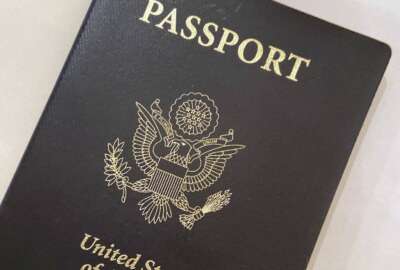Access to voting time for federal workers
Federal employees do get some extra time off on election day this fall. A reminder from the Office of Personnel Management details exactly how.
- Don’t forget federal employees do get some extra time off on election day this fall. A new reminder from the Office of Personnel Management details exactly how much time, and for what reason. Federal employees can take up to 4 hours of paid administrative leave to go vote on Nov. 5. On top of that, feds can take an additional 4 hours off to volunteer as a poll worker. The paid leave for feds on election day comes from an executive order that President Biden signed back in 2021.
(Access to voting for federal workers - Office of Personnel Management)
- There's been another addition to the leadership in the Navy Department's top IT shop this week. Barry Tanner is now the DON's deputy chief information officer. Tanner is already a familiar face in Navy IT circles — he's been a top official in the Program Executive Office for Digital and Enterprise Services for the past four years. The deputy CIO position isn't one the DON always chooses to fill, but the last person to occupy it, Jane Rathbun, is now the Navy Department's CIO.(A new addition to the Navy’s top IT shop - Department of the Navy)
- Four agencies proved that they could reduce the burden on tribal nation grant recipients through a combination of new technology and process improvements. Through the recently completed, Tribal Customer Experience Pilot for Post-Award Reporting, the departments of Health and Human Services, Interior and Treasury along with the White House piloted four solutions based on tribal recipient needs, time and resource availability and potential value to the broader federal grant recipient community. In one pilot, the Indian Health Service reduced the recipient reporting burden by 64%. In another, Treasury created an offline report template through Excel designed for tribes with unreliable internet. The four pilots built upon work these agencies did in 2022 around customer research and discovery of grantee challenges.(Improving tribal grant reporting through human-centered design - Performance.gov)
- One more sign that the military's recruiting challenges may have been a temporary phenomenon: the Navy said it will meet its recruiting goals this year. The service's top personnel official said the Navy will meet its goal of just under 41-thousands new enlistees by the end of September, and won't have any problems meeting the same goal in 2025. For 2024, the biggest challenge is that the recruiting rebound happened late in the fiscal year, leading to a larger surge of recruits than the Navy's boot camp can handle. Because of that, it will take several months longer than usual before the new recruits make their way into the fleet to help alleviate a personnel shortage of more than 20-thousand sailors.(Navy set to meet 2024 and 2025 recruitment goals - Federal News Network)
- Results from the 2023 Federal Employee Viewpoint Survey show that employees in the field feel less engaged and satisfied than headquarters staff, for almost every question on FEVS. They feel generally worse about their workloads, pay rates and even the recognition they get from their supervisors. A new report from the Partnership for Public Service said agencies should do more to build trust and communication and invest in opportunities for career growth. Those are just a few ways agencies can improve engagement for food inspection workers, national park rangers, wildland firefighters and many others.(Focus on the front line or fall behind - Partnership for Public Service)
- The strategy will help the service foster better data-sharing practices and develop capabilities compatible with the U.S. systems. The document will align with the recently released commercial space strategy, which lays out how the service plans to procure and integrate commercial space capabilities. Overclassification of data has long hindered the service’s ability to work with international partners. Efforts such as the service’s allied exchange model, which allows the Space Force to share unclassified information with allies and partners, are already making an impact on the service’s day-to-day operations.
(Space Force to release allied space strategy - Federal News Network)
- StateChat, a generative AI tool, is available for all 80 thousand State Department employees to use with internal sensitive, but unclassified information. Matthew Graviss, State's chief data and artificial intelligence officer, said StateChat is bringing innovation to the workforce especially those foreign service officers arriving at a new post. "Having a conversational experience about what has happened from that post's perspective or your predecessor's perspective over the last few years and then allowing that to accelerate your learning journey." Graviss said State will continually update the tool based on user feedback.
- The Maven Smart System has significantly increased the number of AI models used to analyze and share intelligence. The system has also significantly increased the number of detections. But the computing resources have not kept pace, impacting the system's performance. Vice Admiral Frank Whitworth, the National Geospatial-Intelligence Agency director, said the computational resources available are similar to those from 2016 or 2017, which is insufficient to handle the current workload. In June, the Pentagon announced it was rolling out AI-powered Maven Smart System to thousands of users worldwide.
Copyright © 2025 Federal News Network. All rights reserved. This website is not intended for users located within the European Economic Area.
Michele Sandiford
Michele Sandiford is a digital editor at Federal News Network.






